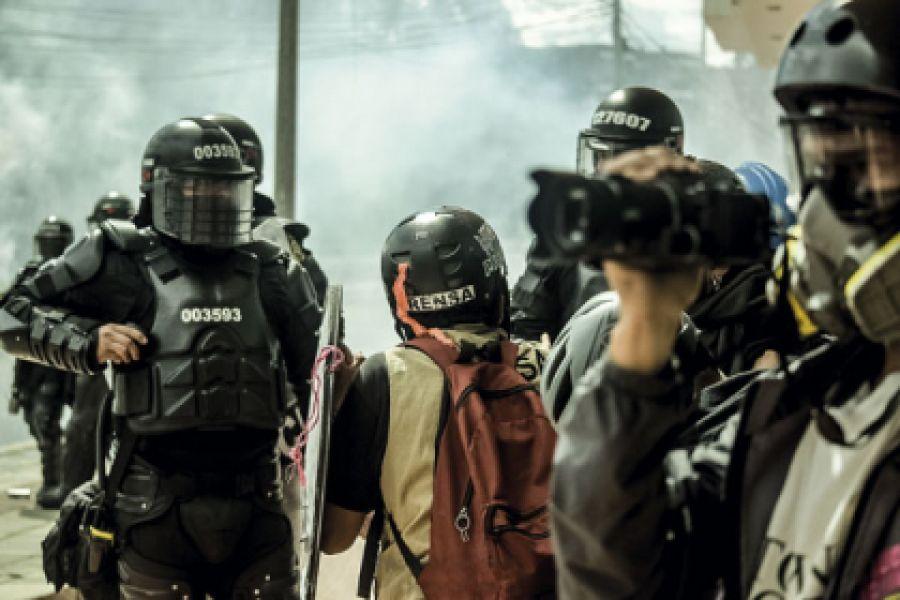Violence to prevent the flow of information
Police officers and private citizens repeat patterns of aggressions against journalists, they fuel stigmatization and obstruct the circulation of information. They also forget that the press is not there to ratify their speeches or extol their image. These are the forms of aggression and the numbers of aggressions against journalists that FLIP has documented between April 28 and July 19.
TOTAL NUMBER OF ASSAULTS: 300 / TOTAL NUMBER OF VICTIMS: 342 1. AGGRESSIONS BY THE SECURITY FORCES AGAINST THE PRESS
Members of the police have been the biggest aggressors against journalists covering social demonstrations. Despite the fact that their duty is to protect citizens and guarantee the exercise of journalism, they have beaten, kicked, shot, detained and threatened those who are doing the coverage from the streets.
TOTAL: 181 ASSAULTS / 224 VICTIMS
7 categories of aggression by the security forces against journalists:7 categories of aggression by the security forces against journalists:
- Physical assault (8 patterns)
- Threats (2 patterns)
- Illegal detention (2 patterns)
- Obstruction of the journalistic exercise (3 patterns)
- Harassment (1 pattern)
- Theft or removal of journalistic material (3 pattern)
- Violation of the source confidentiality (1 pattern)
- AGGRESSIONS BY PRIVATE INDIVIDUALS AGAINST THE PRESS
Although the responsibility level of a police officer is very different from that of a civilian, and so should be the way they ought behave in scenarios of social protest, citizens must also respect the exercise of the press. These aggressors may be demonstrators or civilians in favor or against social protest.
TOTAL: 79 ASSAULTS / 93 VICTIMS
10 categories of aggression:
- Physical assault
- Threats
- Damage to infrastructure
- Stigmatization
- Exclusion
- Harassment
- Obstruction of the journalistic exercise
- Theft or removal of journalistic material
- Arbitrary actions in social media
- Espionage or invasion
Published in Pronouncements
